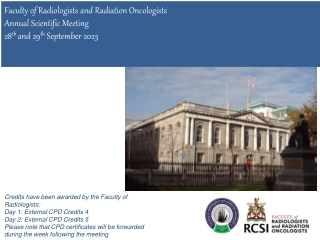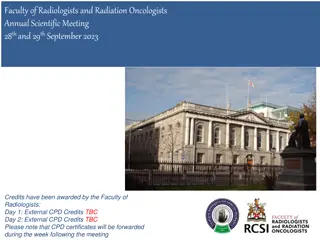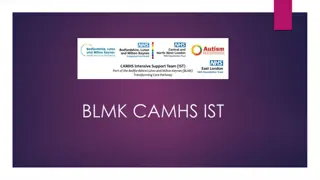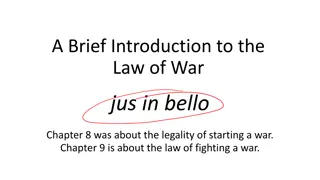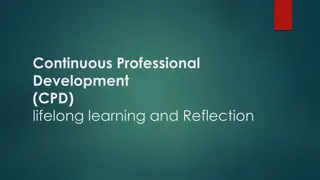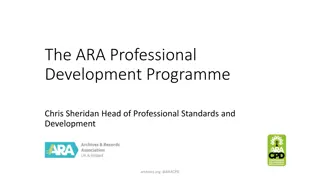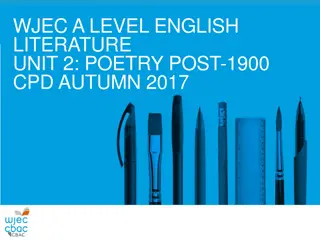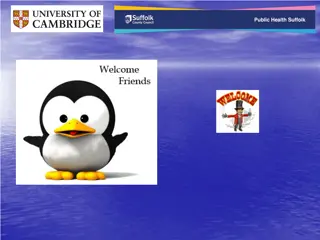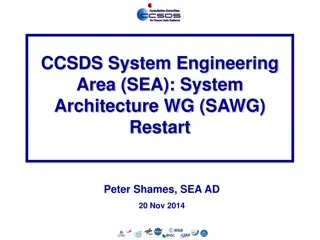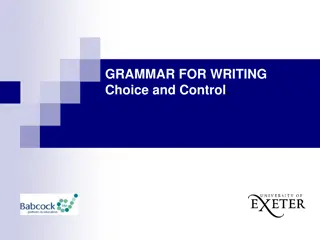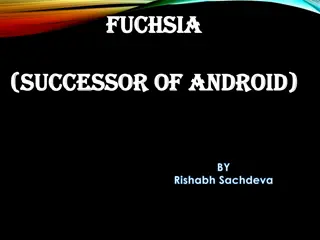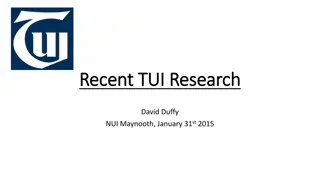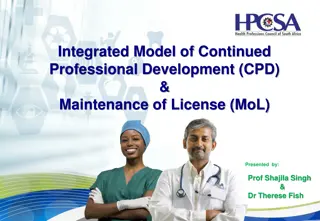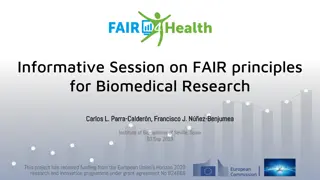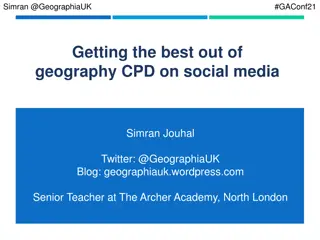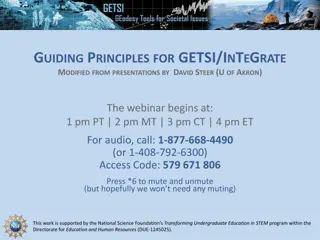
Enhancing Learning Through Magenta Principles in Education
Explore how the Magenta Principles can transform the learning experience by promoting active student-centered engagement through strategies like Connect, Contrast, Arrange, Challenge, and more. Discover innovative approaches to fostering critical thinking and knowledge retention in the classroom.
Download Presentation

Please find below an Image/Link to download the presentation.
The content on the website is provided AS IS for your information and personal use only. It may not be sold, licensed, or shared on other websites without obtaining consent from the author. If you encounter any issues during the download, it is possible that the publisher has removed the file from their server.
You are allowed to download the files provided on this website for personal or commercial use, subject to the condition that they are used lawfully. All files are the property of their respective owners.
The content on the website is provided AS IS for your information and personal use only. It may not be sold, licensed, or shared on other websites without obtaining consent from the author.
E N D
Presentation Transcript
Aims of session Aims of the session
Learning is the consequence of thinking therefore our job is to get them to think Language is central to thinking therefore our job is to get them to talk Learning is an active process therefore our job is to get them doing
If our goal was to make learning an engaging, student centred experience then the Magenta Principles was the vehicle that enabled us to get there.
What are the Magenta Principles?
The Magenta PrinciplesTM Magenta Principles? One principle; in order to make sense of the information that comes their way, children have to do something to / with it. We want them to get it, get why they got it and, as much as anything, enjoy it
What are the Magenta Principles we can use in the classroom?
Magenta Principles? Connect Contrast Arrange Challenge Replace Reduce Change Develop Deconstruct Prioritise
Connect transfers of knowledge, mind maps, linking ideas together, describe how different topics are linked together appendices of information link together and explain links! Contrast for/against, positive/negative, analyse method differences, debating, introduce an idea, is it this or that: vocab. Compare sources, opinions for/against
Arrange - Diamond 9, venn diagram, different graph layouts, human sentence, story line, sort, pick out sentances, for/against, timeline, classify Challenge Should be omnipresent in every task Teach a lesson, re-draft, open ended questions, passing questions around the class
Replace Can you answer the question without using the word . Replace words with pictures/actions Replace certain words with different words that might mean the same thing Reduce What are the 3 key words? 5 suprising things in a text. Staged reduction
Change Bar chart: change to a different form Story into timeline Change words to pictures and de-code to partners (and vice versa) clarify a piece of work. Paraphrase. Develop Connectives in A-level used two, now use three to extend. Trap door game Take something and make it better using awesome words/increasing detail. Re drafting Give word and develop into sentence/idea
Deconstruct Break down a task into a mini task Take apart exam question Text attack (with a highlighter) Prioritise Diamond 9 Identifying which part of a task needs to be done first
Tailoring MP to G&T Tweaking MP for G&T
What would you expect a G&T student to be like?
Gifted students need to serve as examples to others, and they should always assume extra responsibility. Gifted students are naturally creative and do not need encouragement. Gifted students do not need help. If they are really gifted, they can manage on their own. The social & emotional development of the gifted student is at the same level as his/her intellectual development. The primary value of a gifted student lies in their brain power.
Common myths Gifted students need to serve as examples to others, and they should always assume extra responsibility. Gifted students are naturally creative and do not need encouragement. Gifted students do not need help. If they are really gifted, they can manage on their own. The social & emotional development of the gifted student is at the same level as his/her intellectual development. The primary value of a gifted student lies in their brain power.
What do you think the question was? the teacher just makes it up never gets marked don t get enough time to finish it why should I do more work when I have already worked hard
Group work with G&T Group work with G&T
Perfect magenta task! Perfect magenta task!
Vegetable oils do not dissolve in water. If oil and water are shaken together, tiny droplets of one liquid spread through the other liquid, forming a mixture called an emulsion. If an emulsion is left to stand, eventually a layer of oil will form on the surface of the water. Emulsifiers are substances that stabilise emulsions, stopping them separating out. Egg yolk contains a natural emulsifier. Mayonnaise is a stable emulsion of vegetable oil and vinegar with egg yolk.
Mimes/role play/creating a story Ideas with how to stretch it: - One pupil narration Picking a question for the group performing Asking pupils which mime was the most detailed/clear/educational with reasons why Not allowing them to use the key words they ve picked Adding something to add extra detail/excitement
Seven Monkeys This activity works on the principle that different students learn in different ways (V, A, K etc). This will enable you to answer your exam questions in the second half of the lesson.

